
I drink herbal tea nearly every day, often multiple times throughout the day. I love the variety of flavor combinations available.
There is an herbal tea for every mood or ailment.
A hot cup of tea is comforting on chilly evenings. And herbal teas are lovely iced when you want something refreshing instead of plain water but without the caffeine.
I often use strong herbal iced tea as a mixer for cocktails and mocktails.
And while there are plenty of herbal teas available on the market, how wonderful would it be to brew up a mug of tea, you blended yourself from your backyard tea garden?
Growing an herbal tea garden is a great way to add color and beauty to your existing landscape. And even with only a handful of popular plants used in herbal teas, you can create some incredible tea blends.
Save them to sip yourself, or share your combinations with family and friends.
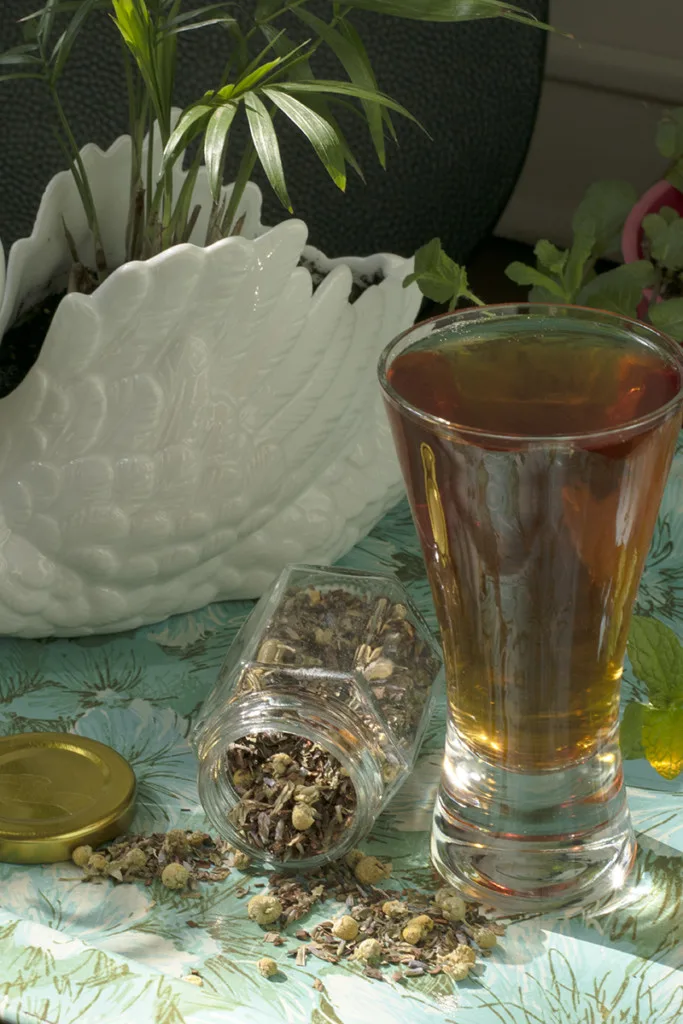
You can even sell your custom herbal tea blends, which is perfect for homesteaders looking for new revenue streams.
Herbal tea is incredibly popular, so whether you grow and blend exclusively for yourself or to sell, an herbal tea garden should be part of every homestead.
An interesting tidbit
Did you know herbal teas are not actually tea? In fact, unless your brew contains tea leaves from the Camellia sinensis plant, a drink made up of only herbs and flowers is known as a tisane.
Sipping a tisane just sounds fancy, doesn’t it?
Why plant an herbal tea garden?
Yes, it’s true, there are many herbal tea blends on the market to choose from these days, but often the ingredients have been treated with pesticides. And you never know when those herbs were picked, so freshness is always a gamble.
I see the words ‘flavoring’ in more and more herbal tea blends too.
I’m always hesitant to buy something if they don’t tell me what the actual ingredient is.
Nearly all of the plants on this list have multiple uses beyond tea.
Many of these herbs and flowers are used in cooking. And they often possess medicinal benefits as well. Plenty of these plants make great additions to homemade soap too.
Having an herbal tea garden provides you with many beneficial plants that are easily incorporated into a natural lifestyle.
Most of the plants on this list make a beautiful addition to your landscaping or permascape. If you have space and want to confine your tea garden to one area, you’ll have a beautiful garden to stroll.
However, you can plant the suggested herbs and flowers all over your property, fill in a sparse area, or add some color to an otherwise bland spot.
You may even have a few of these growing on your land already.
A number of the plants on this list are popular with pollinators. As the global population of pollinators continues to decrease, it’s more important than ever to provide them with food sources.
An opportunity to help lays right in your backyard, and you both get to reap the benefits.
You’ll note that nearly all of the plants that make excellent teas are perennials. This means less work overtime, as you won’t need to replant your garden every year, but rather maintain it.
And best of all, with so many plants at your fingertips, you can pick a custom brew to suit whatever taste you happen to be craving. You don’t have to dry your plants first.
Take a wander through your garden with a mug and fill it with the fresh herbs and flowers that strike your fancy, add boiling water, and steep to enjoy. Beat that Starbucks.
How to dry herbs and flowers for tea
See our post about drying herbs at home to learn how to dry plants for your teas. Then store them in airtight containers out of direct sunlight for maximum freshness and flavor.
Let’s start with a few basics that are common in many herbal tisanes.
1. Mint
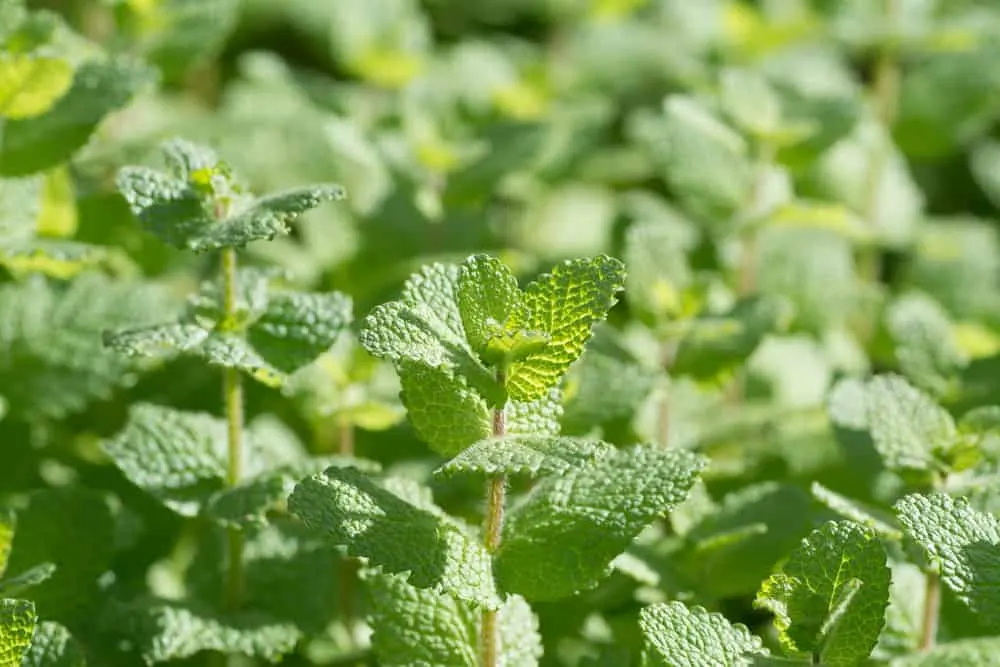
A perennial, mint is probably the first plant you think of when you think of herbal tea. Mint is a staple in any tea garden.
Peppermint specifically, is terrific to sip after a large meal as it helps settle the stomach. And there are so many different varieties of mint to choose from – apple mint, pineapple mint, chocolate mint, the list goes on and on.
Mint is a flavor that blends well with other plants and herbs too. One of my favorite mint pairings is with lavender. Pick and dry the leaves for tea.
Read Next: 16 Reasons To Grow Mint Without Fear Of It Taking Over Your Garden
2. Lavender
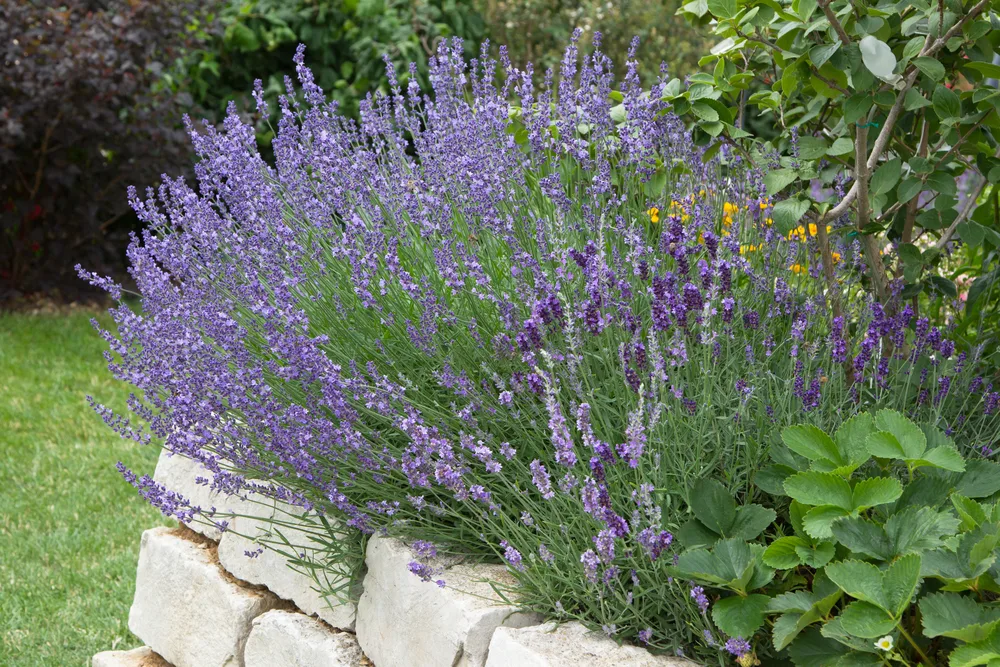
Speaking of lavender, if you’ve never had it in tea, I highly suggest you give it a try. For many people, lavender belongs in soap or perfume, not in your cup.
However, when brewed as a tisane, it has a lovely sweet flavor without being overly floral.
Again, this perennial pairs well with many other herbs. It’s even enjoyable mixed in with black tea.
I like to add a teaspoon of dried lavender buds to my Earl Gray. English lavender is the best suited for making tea with its compact flower heads. Pick and dry the flower heads.
3. Chamomile
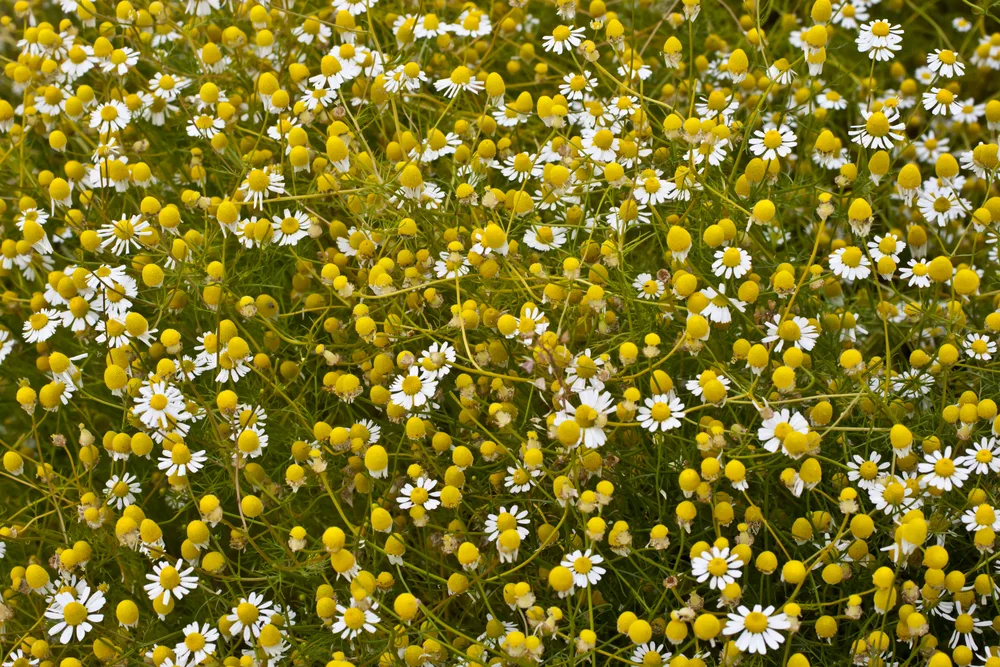
This is another classic perennial often served on its own. Chamomile is excellent for settling upset tummies and helping you destress after a long day.
The flower has a pleasant apple aroma and a subtle taste that is popular with my kiddos. We often have a cup of chamomile tea together in the evenings to help us all get ready for bed.
The flowers make for a beautiful addition to any tea blend, making the dried tisane visually appealing as well as tasty. Use the dried flower heads in your blends.
Both the Roman and German varieties make a wonderful tea. It’s one of the easiest herbs to grow (we’ll show you how) and you can do so much more with chamomile than make tea.
4. Bee Balm/Bergamot
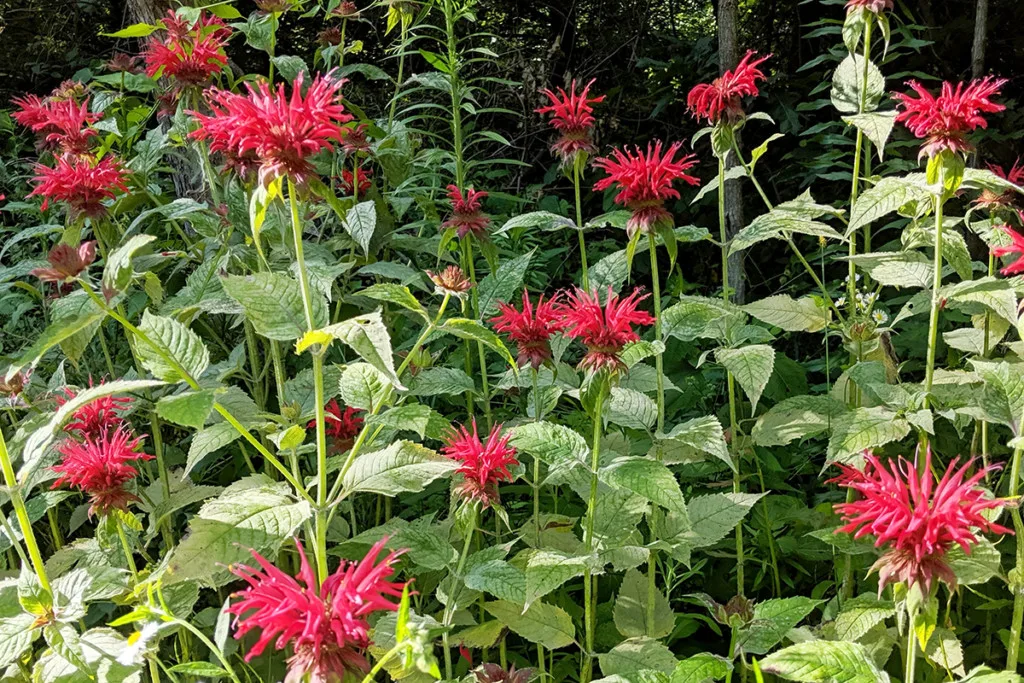
Another perennial, this flower is a member of the mint family, and its petals have a powerful scent and flavor, a mix of mint and citrus.
Use it sparingly in your tea blends, as a little goes a long way.
The petals look lovely, blended with other herbs and flowers. As the name implies, this plant is a favorite with bees. Choose to grow bee balm for tea and pollinators.
If you find it growing wild, save a flower head or two for seeds to grow in your garden. The tall flowers are a gorgeous addition to any landscape.
Use the petals of the flower head in your tea.
5. Lemon Balm
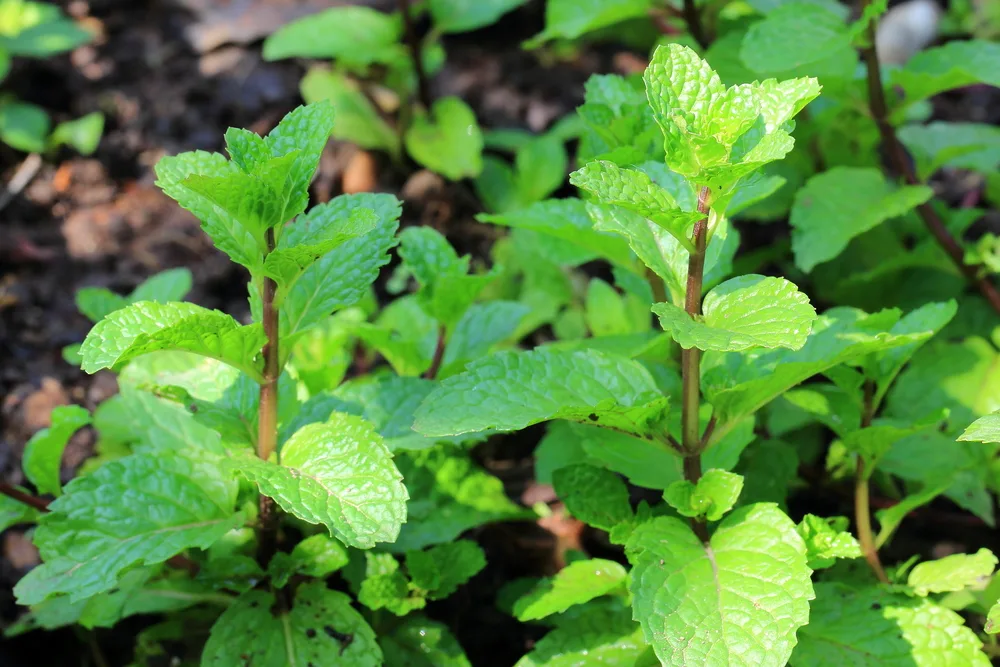
Lemon balm is a perennial plant that can easily take over your garden if left unchecked. Harvest it regularly and pinch it back hard if it starts to creep.
It’s a wonderful addition to any herbal tea blend, with its bright citrus scent and flavor. The leaves also make a pleasant summer mead.
Harvest and dry the leaves for tea.
Read Next: 20 Reasons To Grow Lemon Balm In Your Garden
6. Lemon Verbena
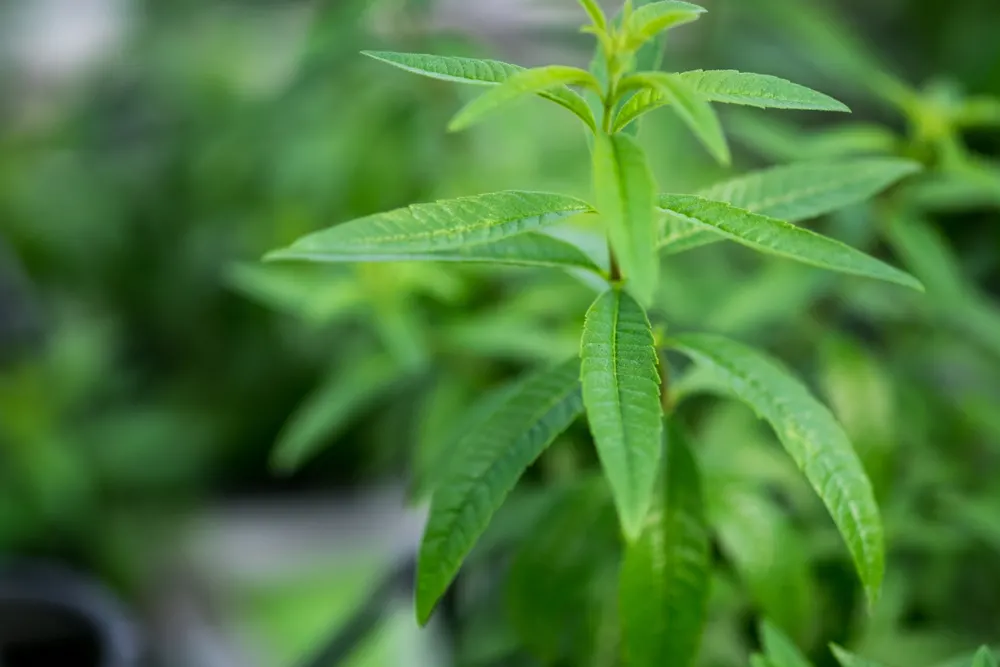
A lemony scented and flavored herb, lemon verbena’s large leaves make a marvelous cup of citrusy tea.
Verbena is a perennial in warmer climates, zones 9 & 10, but is an annual in cooler, northern climates with shorter growing seasons.
Lemon verbena tea is often used to aid in digestion. Dry and use the leaves for tea.
7. Roses
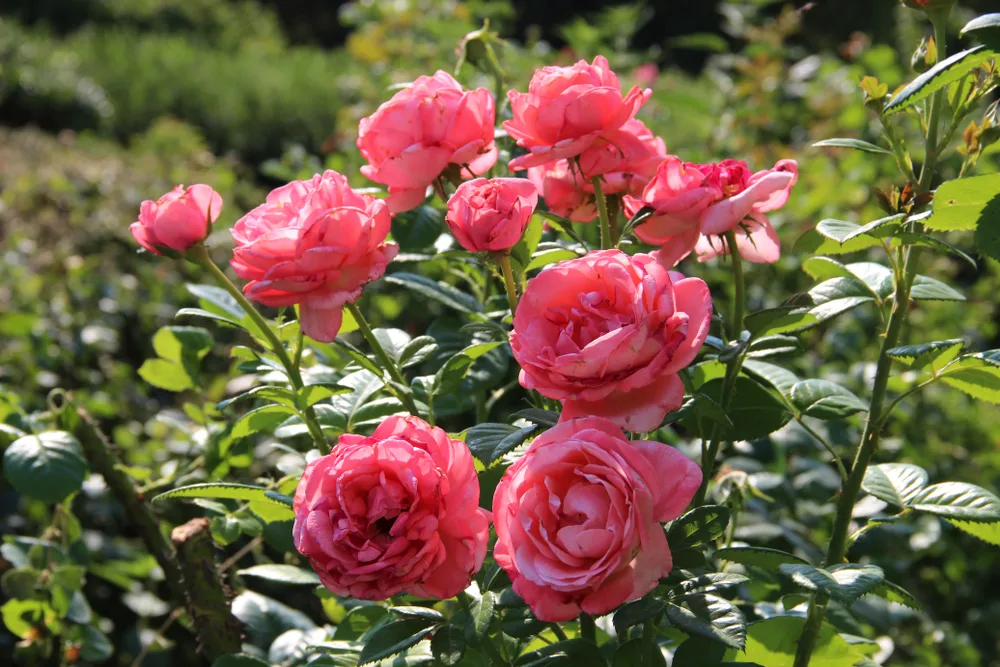
Roses are a perfect addition to any tea garden. They’re beautiful when in bloom and smell wonderful.
A perennial, returning year after year, their petals and even their unopened buds make an excellent addition to any herbal tea blend.
The lovely red/pink of their petals is captured in a cup of tea, and the flavor is lightly sweet and floral. It’s quite lovely.
And of course, when the flowering season is over, harvest rosehips after the first frost to use for rosehip tea or to add rosehips to a blend. Rosehips are packed with vitamin C and lend a bright citrus flavor to tea blends.
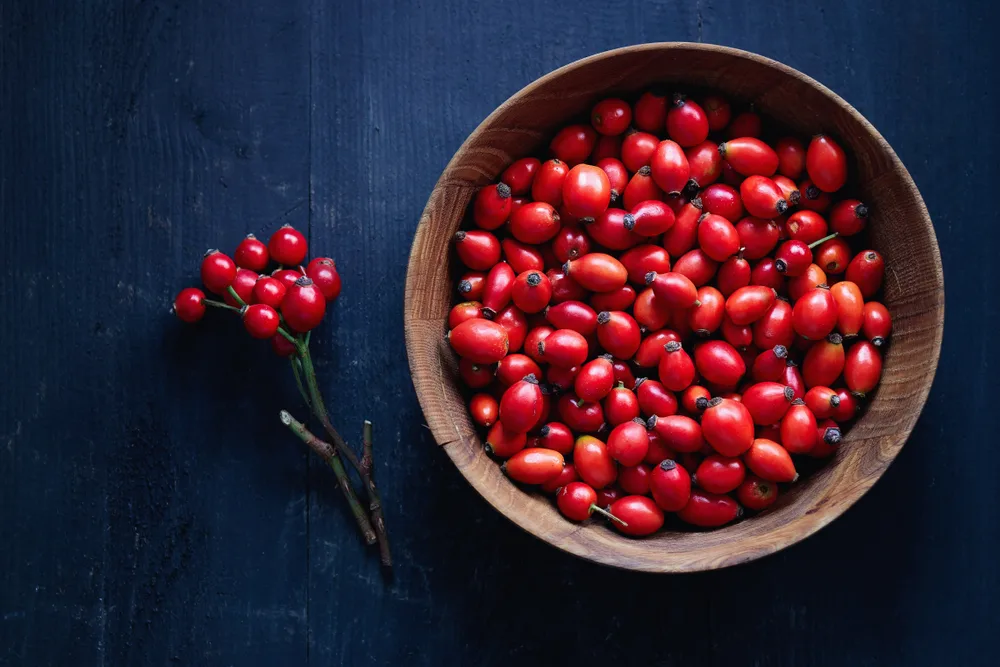
When choosing a rose to grow for tea, you’ll want to stay away from the newer hybrids and opt for heirloom varieties. If you have wild roses on your land, so much the better as they are an excellent choice for tea.
Dry the petals and closed buds, and use the rosehips fresh or dried.
Here are a few more plants that you may have never considered for tea, but make a tasty cuppa.
8. Basil
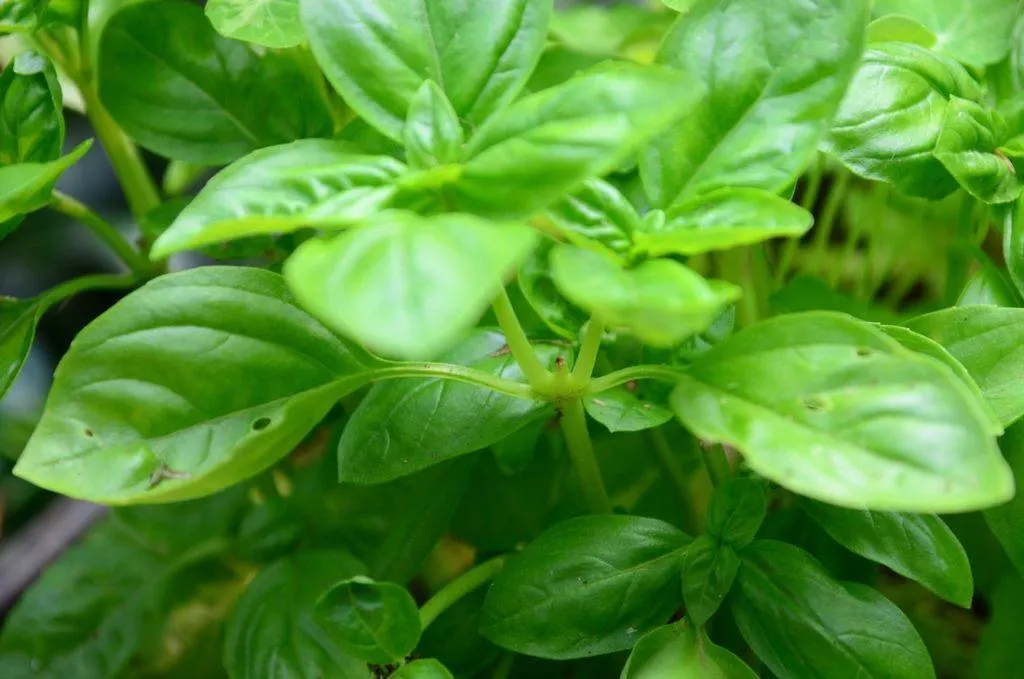
Yes basil, this incredibly fragrant annual makes a wonderfully soothing cup of tea. It’s especially good served with a little lemon or mixed with an herbal tea blend that includes lemon verbena or lemon balm.
Basil, like so many other tisanes, is excellent to sip after a large meal. Blend it with mint for an exceptional iced tea blend.
Dry and use the leaves and flower heads for tea.
9. Thyme
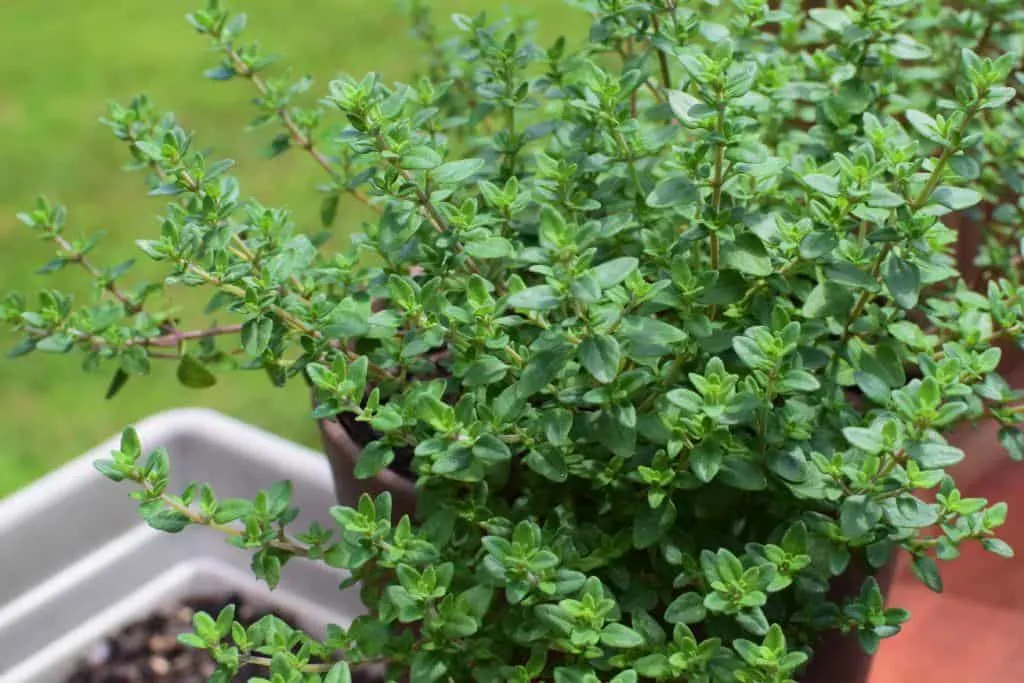
This perennial herb is probably already growing in your herb garden and makes a lovely cup of tea.
Lightly savory, thyme has a host of medicinal benefits when drank as a tisane, including the easing of coughs and as a tension soother. This herb is lovely on its own, or blended with a citrusy herb, like rosehips.
Dry the leaves for tea, removing the woody stems.
10. Rosemary
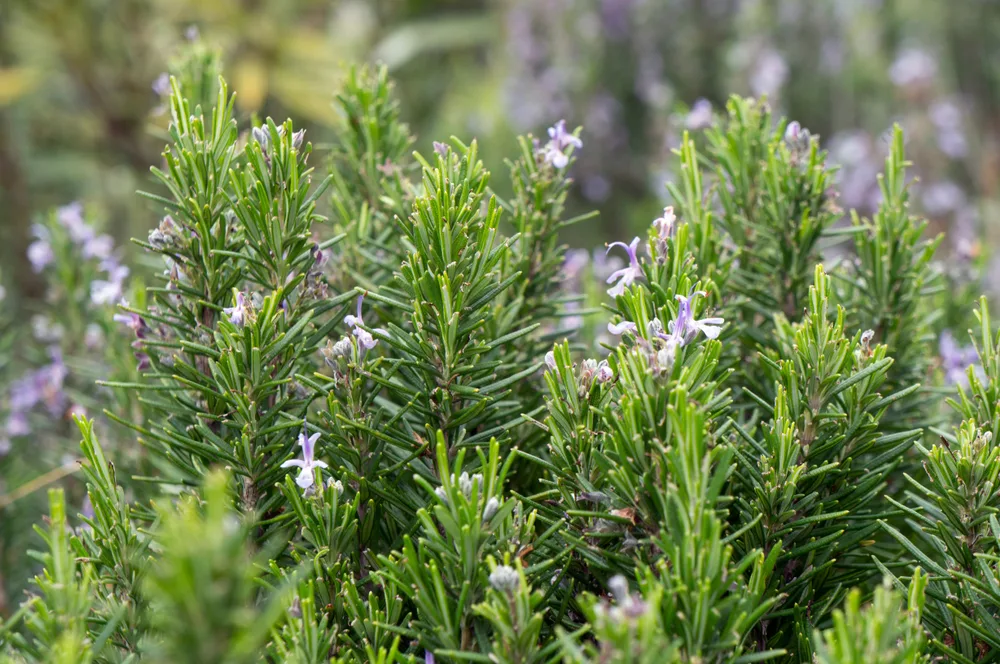
Another popular culinary herb also makes a delicious tea. Rosemary, a perennial, when brewed for tea, has a slight pine flavor with a hint of citrus.
It’s an invigorating tea, and I find that even inhaling the scent while I sip helps me to focus. This is an excellent morning alternative to coffee.
The slight pine taste makes it a nice contrasting taste note in many herbal or citrus blends. Use the dried leaves in tea.
11. Horehound
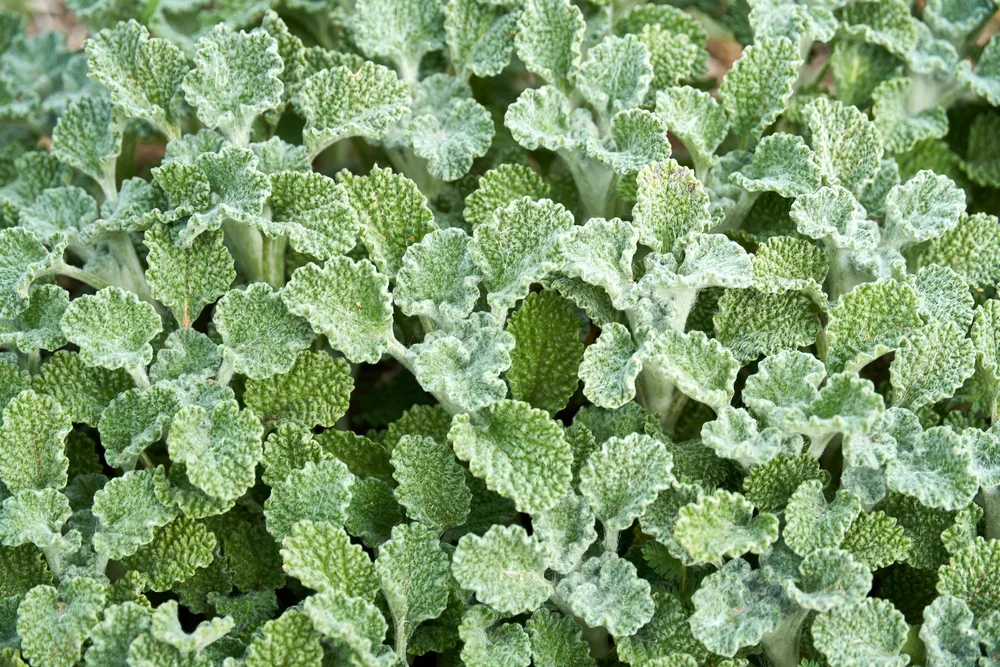
White horehound is probably my favorite tea for when I’m down and out with a cold. Yet another perennial, horehound, is an excellent tea for soothing soar throats.
This plant also attracts bees, so it’s a good choice for tea and for saving pollinators. Harvest and dry the leaves and flowers for tea.
12. Stevia
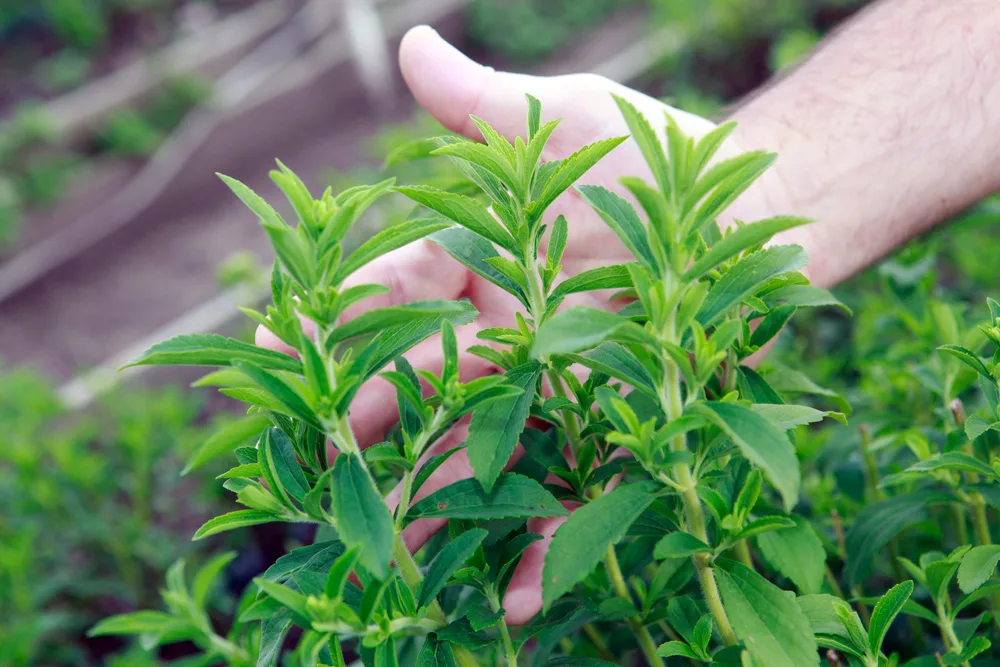
A perennial herb, stevia has become a popular sugar alternative over the years.
Its taste makes it an excellent addition to tisane blends that you wish to sweeten. However, use it sparingly as it’s much sweeter than sugar, and a little goes a long way.
While stevia is a perennial, it becomes less prolific over the years, so it’s best to replace it every two years or so. Dry the leaves.
13. Ginger
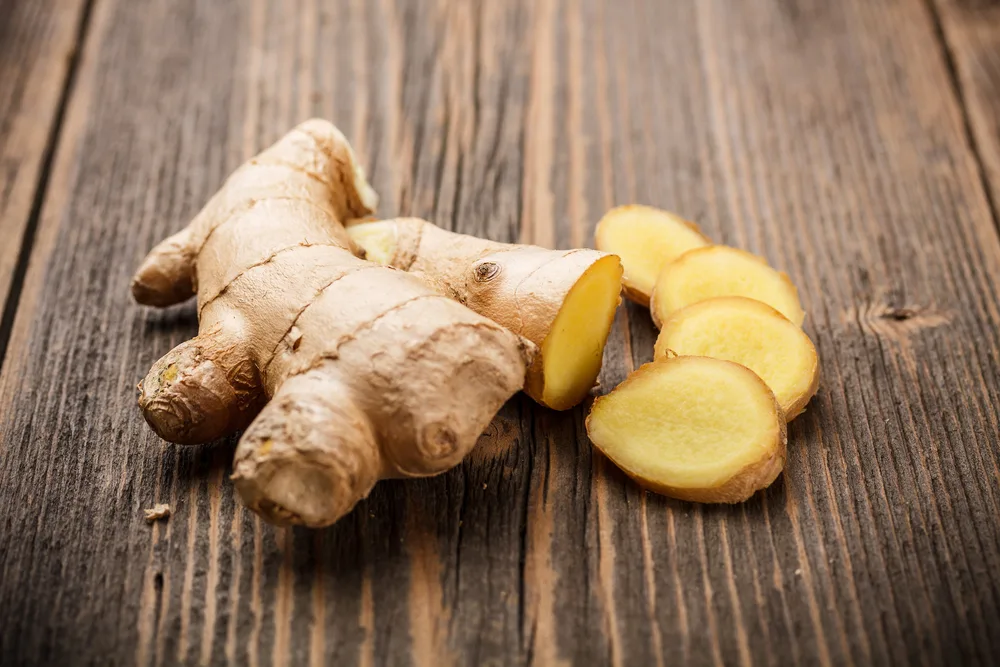
This popular root has a slew of health benefits and makes for a peppy addition to any tisane blend. It’s also a great tea on its own with its delicious bite and bright flavor.
Believe it or not, you can grow ginger no matter where you live, our own Elizabeth Waddington shows us how. Harvest and dry the root for tea.
14. Catnip
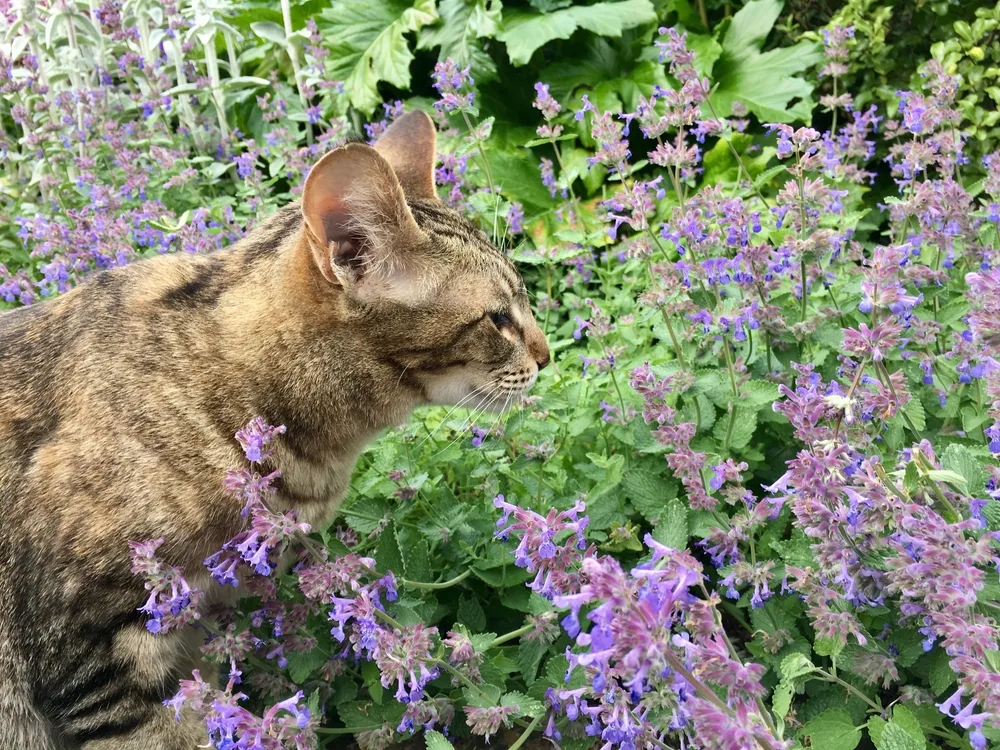
Your cats will thank you for adding this perennial to your tea garden. Catnip is another member of the mint family, and as such, has a mild minty flavor.
Unlike your cats, when you drink catnip tea, it has a calming effect and has been reported to help ease headaches.
This is another good one to drink in the evenings. Use both the dried leaves and flowers in your tea.
15. Nasturtium
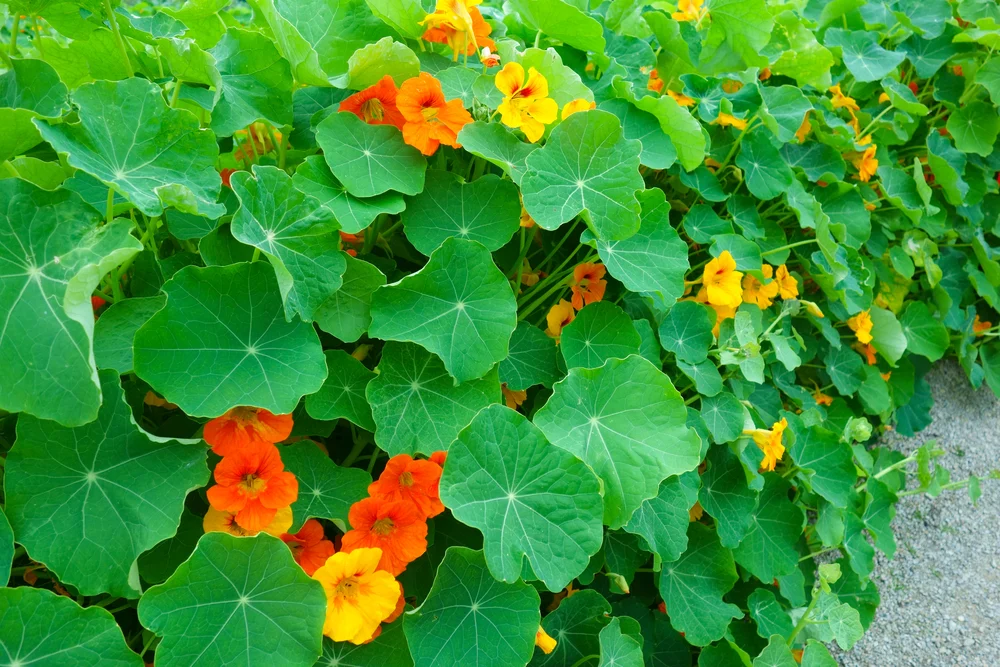
Nasturtiums are versatile, edible plants. Check out our article on how to grow them and some other ideas for using nasturtiums. Nasturtium tea contains natural antibiotic properties.
Its flavor is slightly peppery and is a perfect herbal tea to drink in the winter to warm you.
Typically, nasturtiums are grown as annuals, but they are actually a perennial, and in some warmer areas, they will come back year after year. Use the dried flowers in tea.
16. Calendula
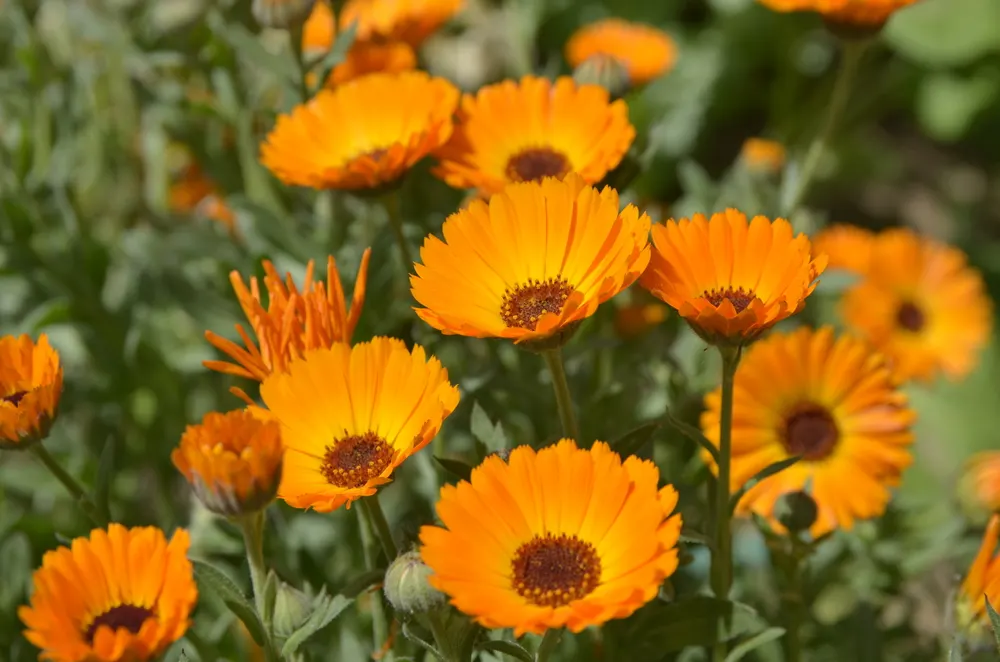
Calendula is known for both anti-inflammatory and anti-fungal properties. This is another popular flower that is a perennial but does best grown annually in colder areas.
The beautiful petals add color to dry tisane blends or are perfect on their own. Read up on how to grow calendula and other ways to use it.
Calendula tea is slightly peppery and earthy tasting and blends well with citrus flavors. Use the fresh or dried petals in tea.
17. Cornflower
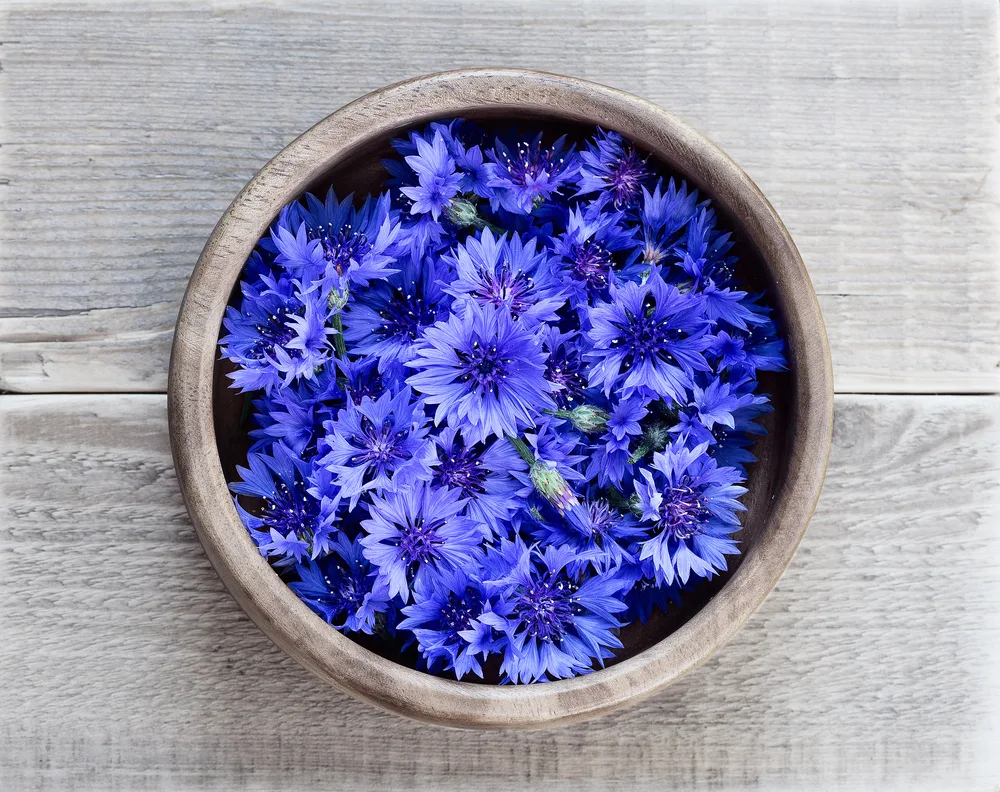
While cornflower has many medicinal properties, it makes for a somewhat astringent drink on its own.
Cornflower is also known as Bachelor’s Button.
It’s best to blend cornflower with other herbs and flowers. Despite its bitter taste, it’s still one of my favorite flowers in tisane blends simply because it’s so beautiful.
It adds a nice pop of color to tea blends. Cornflower is another example of a perennial that is grown as an annual in cooler climates.
Use the lovely blue petals dried in tea.
18. Red Clover
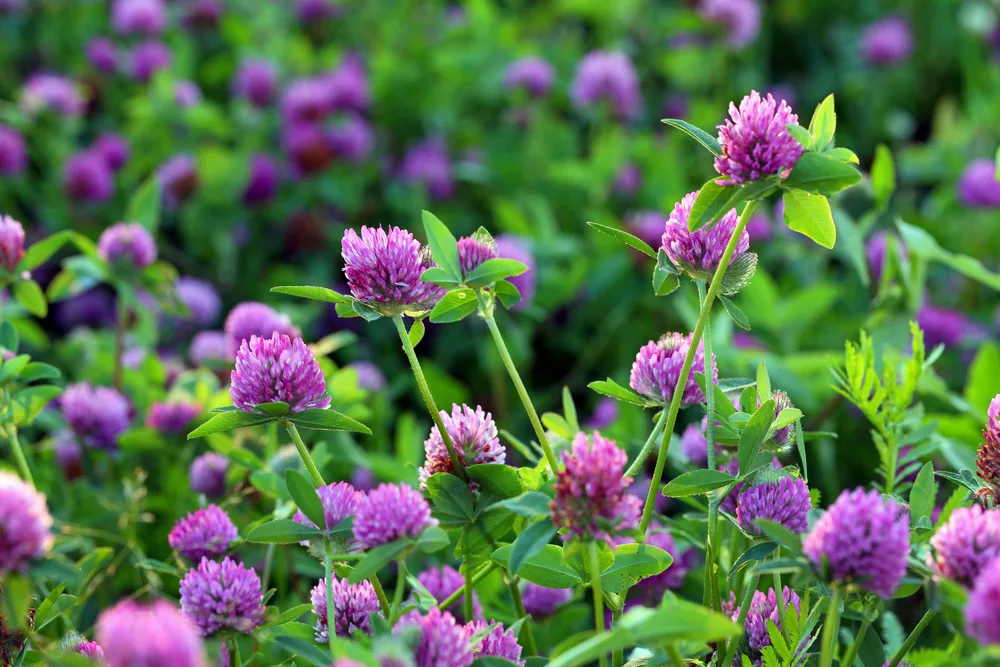
If you’re lucky, you may have red clover growing wild on your property already. Red clover buds make a delightfully sweet tea all on their own but blend well with just about everything else.
This is another excellent pollinator-friendly addition to your tea garden, and there is so much you can do with the flowers beyond tea. Consider adding a patch of this lovely, pink perennial.
Harvest the buds while they are still pink and use them fresh or dried.
By growing an herbal tea garden, you’ll be beautifying your landscape, helping out the declining pollinator populations, and you’ll have custom blended tisanes at your fingertips—all without the worry of additives or pesticides.
And you’ll have personalized gifts at the ready or a new income avenue for your homestead. Start planning a tea garden today.

Get the famous Rural Sprout newsletter delivered to your inbox.
Including Sunday ramblings from our editor, Tracey, as well as “What’s Up Wednesday” our roundup of what’s in season and new article updates and alerts.

